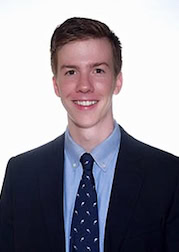
Endoscopists performing certain procedures such as tissue dissection and ablation could be exposing themselves to dangerous levels of smoke, according to a new study being presented during Digestive Disease Week® (DDW) 2024 by Trent Walradt, MD, a research fellow at Brigham and Women’s Hospital.
“As endoscopists, we do a lot of procedures. When we think about ergonomics, we often think about orthopedic injuries and repeated-use injuries,” says Chris Thompson, MD, director of endoscopy at Brigham and Women’s Hospital and principal investigator on the study. “But we don’t think about what we’re breathing in.”
“The cumulative volume of smoke during one procedure was equivalent to smoking one cigarette,” says Dr. Walradt. “Everyone is being exposed — endoscopists, nurses, anesthesiologists and patients. If you’re doing several procedures a day, that starts to add up. This could have important health consequences down the road.”
The researchers measured air particles and air quality during 27 endoscopic procedures. They focused on procedures most likely to produce smoke, namely argon plasma coagulation, gastric and colonic endoscopic submucosal dissection (ESD) and ampullary sphincterotomy.
Key findings from the study include:
- Significant increases in particulate matter ≤2.5 μm and ultrafine particles. These particles contain carcinogenic toxins and compounds that can deposit in the lungs or enter the bloodstream.
- The procedures differed in the quantity of particles they produced. Gastric argon plasma coagulation and rectal ESD produced higher levels of particulate matter and ultrafine particles than other procedures.
- Levels of volatile organic compounds — a marker for indoor air quality — reached twice the maximum safety level determined by the Environmental Protection Agency.
This was the first study to examine air quality during endoscopic procedures, according to Dr. Walradt. Previous studies have looked at the release of dangerous gases during laparoscopic procedures, but until recently, there wasn’t much need to be concerned about air quality during endoscopic procedures.
“As we push the boundaries of what we can do in endoscopy, a lot of these new procedures generate smoke,” says Dr. Walradt. “The field is moving from pure endoscopy to endoscopic surgery, and we’re seeing several parallels to what surgeons experience. We need to be aware of the side effects and protect ourselves.”
Both Drs. Walradt and Thompson hope the study will increase recognition of the importance of air quality during endoscopic procedures and spark new research on not only what types of gases are produced but also on how to mitigate exposure. Dr. Thompson’s group is currently looking at additional endoscopic procedures that produce more smoke than those included in this study.
“There are regulations and guidelines for surgeons in the operating room on how to mitigate smoke exposure, but that does not exist for GI endoscopy,” says Dr. Walradt. He notes that researchers don’t yet know how to best protect healthcare workers and patients from dangerous gases, but measures such as masks, insufflators or other devices to remove smoke during procedures are possible solutions.
“The majority of endoscopic procedures are not a concern,” Dr. Thompson concludes. In fact, he noted that many of their initial air quality measurements taken before the procedure showed that the air was quite clean. “We see these dangerous smoke levels in a select set of procedures that involve tissue dissection or ablation.”
The oral presentation, “An unrecognized threat: Evaluation of air pollutant exposure during smoke-generating endoscopy procedures” on Monday, May 20, at 12:30 p.m. EDT is part of the session “Clinical Endoscopic Practice.”




